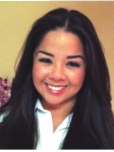FOOD ADDICTIONS

 Binge eating added to list of disorders
Binge eating added to list of disorders
In a culture that seems increasingly food-conscious and sugar-obsessed, the conversations surrounding food addictions and the biological components to obsessive eating have become more frequent, as well as more informed. In the most recently published version of the “Diagnostic and Statistical Manual of Mental Disorders, 5th edition (DSM-5),” the American Psychiatric Association added Binge Eating Disorder (BED) to its list of recognized eating disorders. In previous versions, binge eating was only recognized under the criteria of Eating Disorder Not Otherwise Specified.
Karen Rice, LPC-S, CEO of Bariatric Counseling Services, LLC, and mental health counselor, explains that disordered eating on a clinical level is more than just poor food choices or habits. She stated that one of the more common signs and symptoms she hears from her clients is feeling as though one never gets a “full signal” when eating.
“It was explained to me once by a physician that some people eat until a signal is sent by their brain for them to stop,” said Rice, who is a Fellow of the American Academy of Bariatric Counselors. “He stated that nothing could get him to take even one more bite once he received the ‘full signal’ to stop … There has been some recent research that is investigating whether or not the full signal is not present for some people, or if the full signal has been ignored, or if the person has overeaten past the signal for an extended period and they no longer recognize it, or some other as yet unknown variable. The result is that people with food addictions usually continue to eat even after they are full.”
Rice continued by explaining how other indicators can be when clients will hide food or eat in isolation.
“More than one person has described stopping by multiple fast food drivethroughs on their way home from work, for example, and eat food in the car driving from one drive-through to the next,” she said. “The isolation and hiding of food could indicate other issues which [may present] a need for further exploration.”
Rice wrote an article discussing the concept of “making up excuses for failure,” specifically how some clients will use the six-month period from September to February as an “eat-athon” during the holiday seasons.
“This is simply occasions in which food is an integral part of the celebration or observance,” she said. “If you are an overeater who can justify bending or breaking your resolve in order to celebrate and participate by eating and celebrating, the next six months provide almost a monthly, sometimes more, reasons to do just that.”
In terms of seeking help or treatment for disordered eating, it’s important to recognize that the issue is more than a few isolated incidents of overindulgence. While both the lesser-degree description of disordered eating and the clinical description are both causes for some concern and neither should be discounted, the more critical component is the level of impact it has on a person’s ability to wholly function and day-today life.
“Typically, poor eating habits are a lesser degree of influence or, in a negative way, less impactful on a person’s relationship with food and eating behaviors,” said Rice. “Eating disorders are less common and could be one of the following: bulimia nervosa, binge eating disorder (BED) and a general category of eating disorders not otherwise specified.”
Rice explained that seeking help is a personal and important decision, and might be the right path for someone who feels that their relationship with food is out of balance, or if they feel as though they need to de-emphasize the role that food plays in their life.
“In private practice, I have seen clients that were able to work through fear or anxiety around whether or not they had an eating disorder or simply poor eating habits in a few sessions,” said Rice. “This allows an opportunity to educate and to caution the client on what to look for in the future and to provide information and suggestions for modifications in their thinking and behaviors to attain their goal of having greater balance with relation to food.”
“My therapeutic approach in terms of eating disorders and seeing clients with poor relationships with food is an eclectic one,” Rice continued. “Together, we work together to identify goals, which sometimes change drastically before the time for termination of the counseling relationship. I usually start with cognitive behavioral approach and reassess progress/non-progress. Then, as the counseling process proceeds, I may incorporate other theoretical approaches, such as (Dialectical Behavior Therapy). I focus on goals the client identifies, and we continue to modify as we go along. In terms of recovery, much is dependent on the client and their belief system and on the trust and cohesiveness of the counseling relationship. I believe in recovery from food addiction and the will and resiliency of the human spirit to grow and change.”
While research continues to be ongoing in exploring the biological component that food has on our bodies, Rice hopes there will be more revealing evidence to help those who struggle with eating disorders in their path to recovery.
“I am most excited to learn the outcome of the research that has to do with the influences of hormones, surgical interventions, genetics, genetic wiring, etc., on the question of why some people have the ability to receive or acknowledge a full signal and others do not,” she said. “I think this will be a huge breakthrough for the morbidly obese community, and there is likely a trickle-down effect for those who are only mildly overweight.”
Rice has been in support of the adding of Binge Eating Disorder to the DSM-5, sharing that the more there is to learn about this condition, the more education can be given to the public to improve the quality of life of others who struggle with disordered eating.
